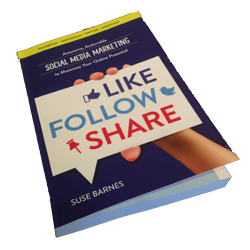Virtual Goods, Virtual Connections, Real People, Real Connections
According to E-Marketer spending on virtual goods is about to explode. How can this be? Why do people want to buy things that they can’t even touch, smell, taste or handle?
If you haven’t spent much time in virtual realities like Second Life, playing roler player games or sending virtual gifts on Facebook you may not be aware what these virtual goods are. They are things like virtual flowers, virtual cupcakes or even virtual hugs. Remember when you used to send someone a birthday card or present in the mail when you couldn’t see them in person? Well in the digital age this process is being completed via emails, SMS messages and even more – virtual cards and even virtual gifts.
It’s the thought that counts, right? Well if it really is, then whether the gift is virtual or physical it shouldn’t matter. Could that be why virtual goods are a growing industry? Is everyone just being budget conscious or cheap by sending virtual gifts? I don’t think so. I think it’s all about connections.
Let’s face it, the world we live in today is much smaller than it was even twenty years ago, because there are many more opportunities to remain connected with people all over the world despite any physical distances. Virtual gifting is a way to let your friends and family know you care about them. My friend Helen sends her friends virtual flowers and gifts for birthdays. Because of that she is top of mind to me and likely most of her other friends when we think about a friend who knows how to play the piano or do administrative work at a law firm.
Showing you care is a way of building connections with people and virtual goods offer a way for you to do that. That’s one reason.

The other reason is that your virtual presence is just as important as your physical presence. Think about it. How many people can you talk to or be in front of physically in one day unless you are at a conference or giving a presentation? In the virtual world there are endless opportunities to be on various networks connecting, sharing, listening and talking with people. Sometime you may not even be aware of the people who are following you.
Virtual goods enable people to improve their virtual presence (avatars) and profiles and since trends in the digital space change so rapidly, there is always an opportunity to purchase something more up-to-date. The good news here, except for the expense is that virtual goods are a zero waste product. That’s the joy of virtual – nothing to throw away, recycle or feel guilty about buying because you’re ultimately adding to the physical landfill. Virtual waste is far more easily erased.
I think we are just at the tip of the virtual ice berg, ha ha, but it’s something to be aware of at least for the near and virtual future.


